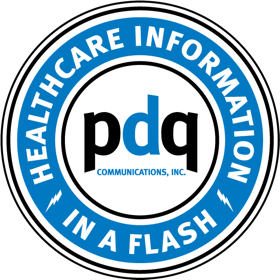When it comes to connecting with healthcare professionals (HCPs), email marketing remains a...
When introducing a new product or service, how can you ensure users are moving toward the bottom-of-the-funnel position?
Reaching busy healthcare professionals (HCPs) is equally challenging—they are constantly on the move and require quick solutions to specific needs.
For an extra communication layer, consider optimizing relevant email marketing campaigns for increased engagement. When presented effectively, your campaign can be instrumental toward a subscriber’s path to purchase.
Let’s review some of the current tactics toward an optimized email marketing campaign:
1. Mobile Device Compatibility
With more users utilizing smartphones and tablets, it’s important your email campaign is compatible with these devices. According to SaaS provider HubSpot: “mobile opens accounted for 46 percent of all email opens” in 2019. This method is becoming increasingly popular, including among healthcare professionals who are busy meeting with patients and aren’t anchored to a desk, so they naturally gravitate toward mobile communications.
When it comes to purchasing decisions, mobile browsing is moving forward. More users want to receive emails on smartphones and tablets to click, review and take appropriate action. This is especially helpful if the offer is time-sensitive or urgent because it reduces the chances of a user missing the email by the time they get to their desktop computer.
Data is also reflecting a general trend toward mobile communications. The percentage of emails opened on a traditional computer is down to less than 10 percent, as aforementioned in a previous blog post.
2. Video
Video is a solid and powerful way to communicate your message. It can entertain and inform subscribers, leading toward, according to research, a solid return on investment. Online advertising agency Wordstream notes: “51% of marketing professionals worldwide name video as the type of content with the best ROI.”
Other benefits include quicker subscriber engagement. This is helpful for HCPs, who as aforementioned, are already short on time and therefore find it more conducive to watch video during brief downtimes.
Video can also boil down a specific process or concept in a more simplified way for the user to understand. If they’re unsure of your offer, they’ll be less likely to click.
According to online advertising agency Wordstream, “51% of marketing professionals worldwide name video as the type of content with the best ROI.”
3. Personalization
An HCP’s hectic schedule dictates how they choose to consume information. A general salutation, such as Hello Healthcare Professional, will lead to unsubscribes quicker than you can say SPAM. This approach will make them feel like a number instead of an actual person.
An HCP has opted to receive communication because they want to hear more about what you’re offering. A best practice is providing useful, personalized information based on their interests. This could include geographical location, practice specialty, browsing history, and email preferences. For example, you wouldn't email a Florida-based dentist regulation information that adheres to California or New York.
The effects of personalization are examined in The Adestra / IDM State of Digital Personalization report. According to the study, as cited by Behavioral Marketing company SaleCycle, “82 percent of marketers reported an increase in open rates through email personalization, while 75 percent believe it yields higher click through rates. Which brings us to our next point regarding automation.”
As a marketer, you have a better chance of reaching a busy HCP If you analyze and personalize your general content.
4. Automation
As mentioned in a previous blog, automation within email marketing can serve as an analytics tool. Similar to the aforementioned personalization tactic, automation facilitates specific messages based on subscriber actions. This can be done through any SaaS-based automation tool providing alerts or triggers to automatically send an email subsequent to a specific action.
If a subscriber responds to a call to action download, your automated workflow can send a follow-up alert asking for additional information. You can also offer another value-add content piece on the same topic.
While this process can take time on the back end, it’s a time-saver on the front end. It removes the guesswork of understanding how subscribers want to receive communication and provides consistent engagement optimization.
5. Data Privacy
While indirectly related to email marketing, data privacy has become increasingly important over the last decade. HCPs will provide their personal information to learn more about a marketer’s products and services. Privacy is a natural concern, and there are relevant measures to safeguard user data and ensure digital compliance, such as the General Data Protection Regulation (GDPR) and the California Consumer Privacy Act (CCPA).
These laws are enforced to protect data privacy, and with good reason. According to the 2018 Data Privacy Report: What Brands Need to Know About Consumer Attitudes Post-Cambridge Analytica completed by email marketing and marketing automation services company Sailthru, “Nearly 60% of respondents across both cohorts believe the U.S. government should regulate how companies use consumer data.”
Introduced in 2018, the GDPR states that consent is required for data processing and collection. This mandates each European Union member county to consistently protect all consumer and personal data throughout this geographical location.
Privacy is a natural concern, and there are relevant measures to safeguard user data and ensure digital compliance.
“Some of the key privacy and data protection requirements of the GDPR include: requiring the consent of subjects for data processing, anonymizing collected data to protect privacy, providing data breach notifications, safely handling the transfer of data across borders, and requiring certain companies to appoint a data protection officer to oversee GDPR compliance,” according to data loss prevention software company Digital Guardian.
It’s important to note that the CCPA is broader than the GDPR. It states that California-based consumers can request any information on them that’s been saved by any website they’ve visited. This is regardless of whether the company has a California—or United States—location. Additionally, per California law, any consumer can take legal action against non-compliant companies, regardless of a data breach.
Staying Updated
When reviewing the aforementioned items, remember to take stock of any you’re currently utilizing, or not using for that matter. If your campaign can use a boost on the latest email marketing trends and tactics, it’s wise to discuss with a professional who can provide further insight and strategies.
Are you wondering how to reach busy HCPs with the right message, at the right time? Consult PDQ Communications to ensure your products and services are resonating with the audience you want to connect with through the most relevant messaging. Contact us to put our proven healthcare network to work for you.








